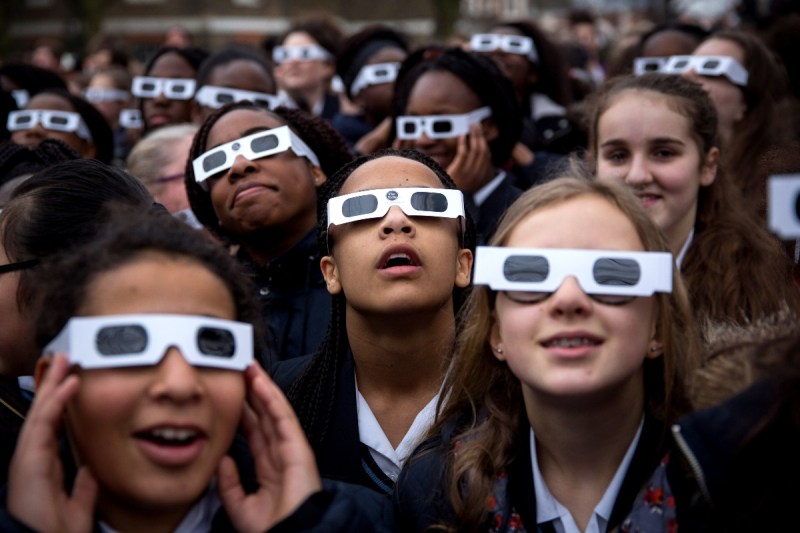With the total solar eclipse set to take place in less than two weeks, here is why it is so important to watch the phenomenon with proper eyewear.
Videos by Suggest
According to NASA, if spectators do not wear proper eyewear to watch the eclipse, the rays can burn unprotected eyes and cause extensive damage to retinas.
It is noted that solar eclipse glasses are NOT the same as regular sunglasses. Regular sunglasses are also not safe to wear during the event.
“Do NOT look at the Sun through a camera lens, telescope, binoculars, or any other optical device while wearing eclipse glasses or using a handheld solar viewer,” NASA cautions. “The concentrated solar rays will burn through the filter and cause serious eye injury.”
The solar eclipse will take place on April 8. It will begin in Texas at 1:27 p.m. CDT and end in Maine at 3:35 p.m. EDT. However, the exact time of the eclipse will vary by where the spectators are in its path.
It was further reported that much of the U.S. will get a partial view of the eclipse that isn’t too impressive as being in the path of totality. Earth will also not be plunged into complete darkness.
Texas is notably the best place to watch the solar eclipse. The next visible total solar eclipse will take place on Aug. 23, 2044.
Here’s How to See the Solar Eclipse Without Recommended Eyewear
If spectators do not have the proper eyewear to see the solar eclipse, NASA recommends that they use an indirect viewing method. This involves not looking directly at the sun.
“One way is to use a pinhole projector,” NASA shared. “Which has a small opening (for example, a hole punched in an index card) and projects an image of the Sun onto a nearby surface.”
“With the Sun at your back, you can then safely view the projected image. Do NOT look at the Sun through the pinhole!”
Speculators can also make their own eclipse project by using a cardboard box, a white sheet of paper, tape, scissors, and aluminum foil. “With the Sun behind you, sunlight will stream through a pinhole punched into aluminum foil taped over a hole in one side of the box.”
“During the partial phases of a solar eclipse, this will project a crescent Sun onto a white sheet of paper taped to the inside of the box. Look into the box through another hole cut into the box to see the projected image.”
NASA does not recommend using eclipse glasses or handheld viewers with cameras, binoculars, or telescopes. The devices all require different types of solar filters. Spectators are to seek expert advice from an astronomer before using a solar filter.
